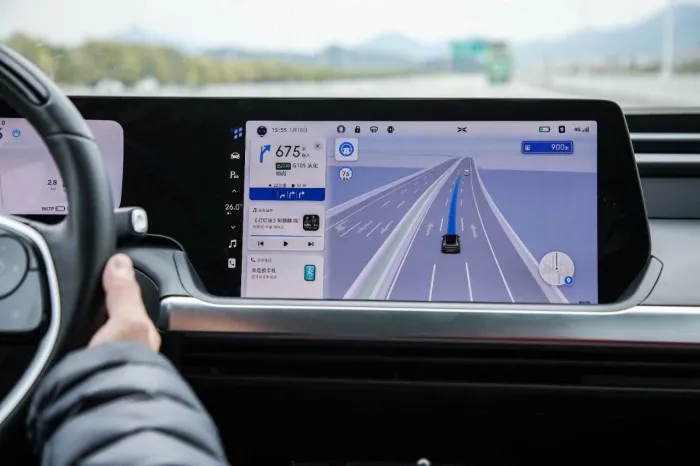Introduction
As the name implies, the High-Speed Navigation Assistance (HSNA) is an auxiliary driving function launched for high-speed scenarios. It enables the vehicle to perform automatic lane changes and ramp entering/exiting based on the navigational planned routes, covering the high-speed highways and elevated roads mapped precisely. It is foreseeable that this year will be an explosive year for HSNA.
On October 23, just before the XiaoPeng Motors Day, we tested the NGP (Navigational Guided Pilot) engineering version of XiaoPeng P7. After three months of training, the NGP has evolved into the NGP Beta version.
So, what specific work has XiaoPeng Motors done regarding this? Huang Xin, the Director of Autonomous Driving Products at XiaoPeng Motors, said that the NGP has undergone 12 major version iterations, 91 minor version iterations, and millions of miles of road tests in recent months. NGP has brought four major improvements: more stable software, safer driving, smoother user interaction, and more convenient use.
In addition, the autonomous driving team of XiaoPeng Motors stated that they aim to complete the NGP’s push before the Chinese Spring Festival. This is a blessing for XiaoPeng P7 owners.
Now, let’s see how the NGP Beta version performs below.
Changes in NGP Beta Version
Compared with the engineering version, the biggest change lies in the human-computer interaction. This time, XiaoPeng directly integrated high-precision maps into the NGP to make a set of high-precision map-based navigation maps.
The UI contains a lot of information, showing the current status of the vehicle and the next operation to be taken (such as overtaking), and adding voice prompts or sound reminders to make the user feel more at ease. In addition, the system boundary is clear. It will identify and inform the user of risk scenarios and when to take over.
As for the entire interface design, it is very smooth and smooth, thanks to the integration of high-precision maps. We can see more rich details in the navigation map than the current one. At the same time, XiaoPeng incorporated the content recognized by its own sensors into the map, allowing users to have an insight into the surrounding driving environment while in the car. Also, the entire map supports flip, zoom and other operations without delay. It can be seen that the autonomous driving team of XiaoPeng Motors has indeed put a lot of effort into it. Moreover, this kind of finer and more detailed map looks really cool (see video below).
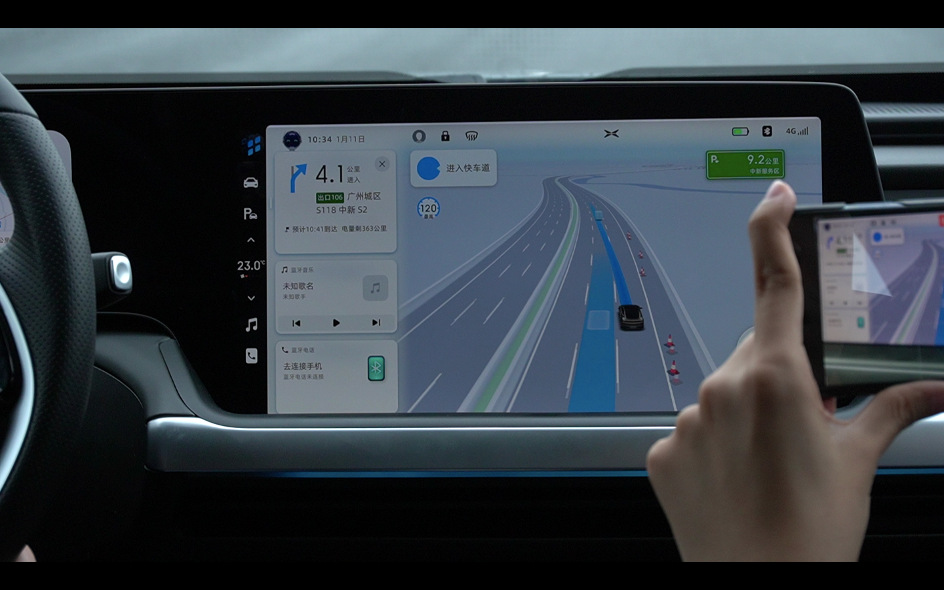 ## How is the actual experience?
## How is the actual experience?
Without further ado, let’s get to the experience. Our route is as follows:
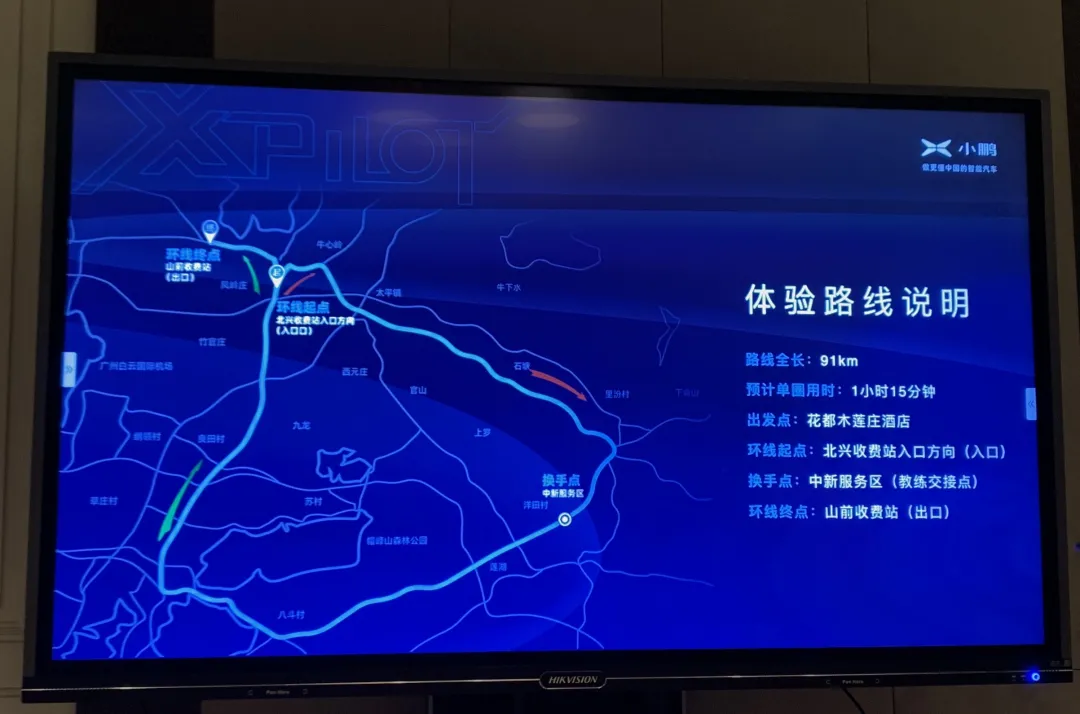
As for the experience, let’s just show a video. It will provide a more direct sense for everyone:
Let me discuss a few points that left a deep impression regarding NGP:
- High efficiency, NGP always chooses the most efficient lane during the entire driving process. In the video, you can actually see that even when the current lane was busy, the NGP was quickly able to switch to the faster lane and accelerate to the highest speed. By comparison, in the Tesla NOA, if you’ve already switched to the left fastest lane, it will continue to drive in that lane and not switch to other, smoother lanes.
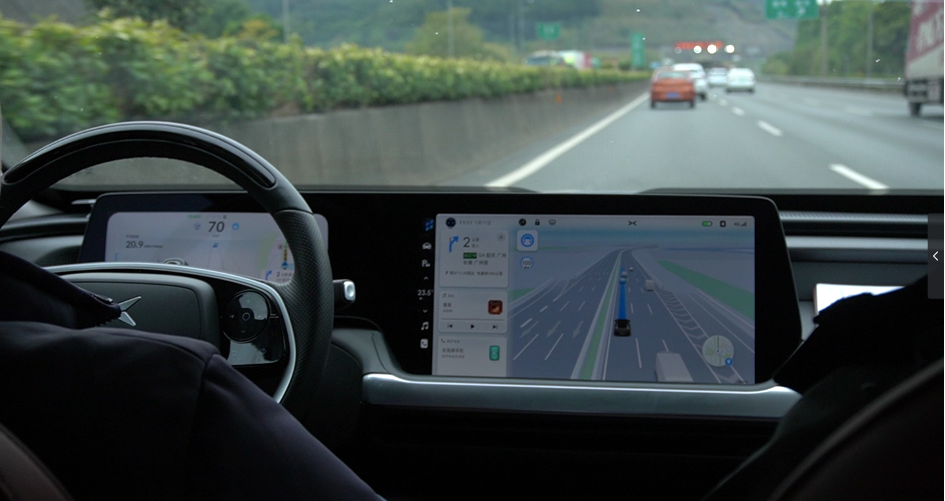
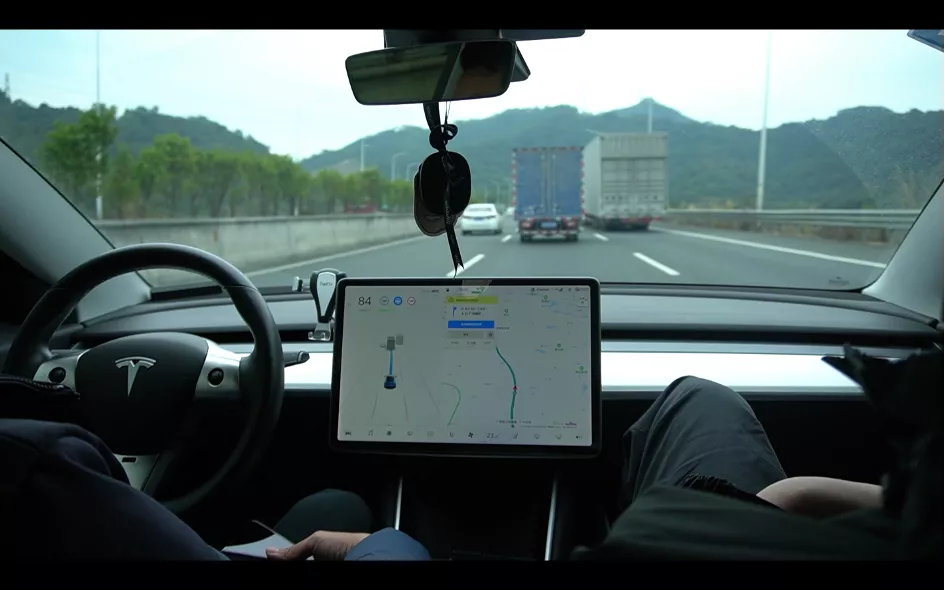
-
Decisive lane changes: Before changing lanes, NGP will give a voice reminder, which is very good as it increases user confidence and safety. Moreover, once the voice reminder ends, the NGP will immediately start changing lanes.
-
Considerate voice reminders: In addition to lane changes, the system will give voice reminders for overtaking, entering ramps, and exiting the NGP. This increases the safety and usability of the system. In addition, it will also give voice reminders in case of bad weather or construction ahead.
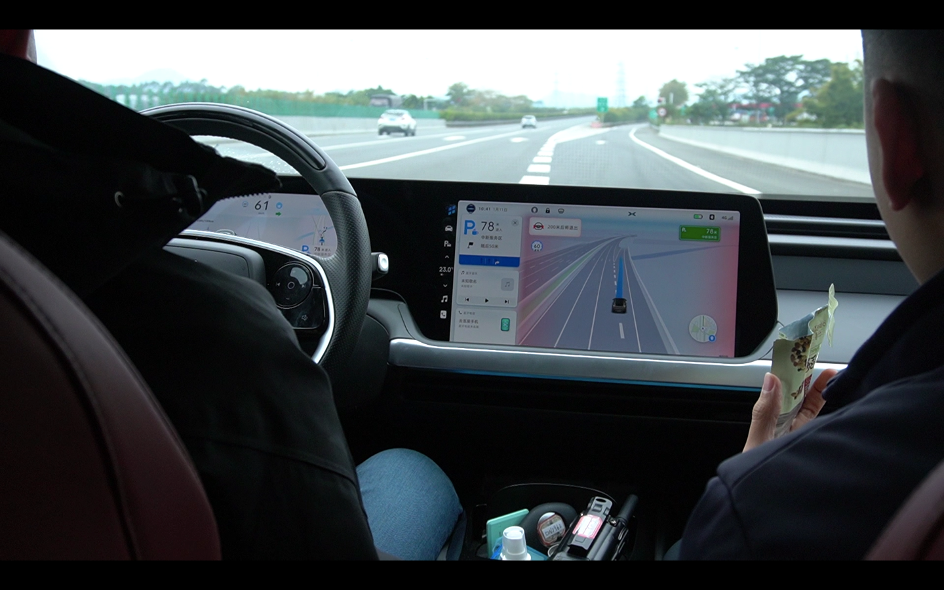 4. Follow the local customs when entering the village after passing the expressway. Currently, for the high-speed navigation assistance function, the reference object for comparison is Tesla’s NOA. When the NOA of Tesla enters the expressway ramp, it will drastically reduce the speed to 40 km/h in a very short time, which is unpleasant; moreover, when you see that every car on the ramp is faster than you, you may feel anxious, which makes the experience less satisfactory. However, NGP will adjust the speed appropriately not only based on speed limit signs but also based on the speed of other vehicles on the road, which is more user-friendly and a local advantage.
4. Follow the local customs when entering the village after passing the expressway. Currently, for the high-speed navigation assistance function, the reference object for comparison is Tesla’s NOA. When the NOA of Tesla enters the expressway ramp, it will drastically reduce the speed to 40 km/h in a very short time, which is unpleasant; moreover, when you see that every car on the ramp is faster than you, you may feel anxious, which makes the experience less satisfactory. However, NGP will adjust the speed appropriately not only based on speed limit signs but also based on the speed of other vehicles on the road, which is more user-friendly and a local advantage.
- “Special scene” for heavy trucks: This should be a new item added to NGP. It may not be easy to share the meticulous processing of NGP with a video. For example, if a truck on the right is crossing the lane markings ahead, the car will predict and brake appropriately in advance, but the change is not significant, so you may not sense it immediately. Therefore, it can be seen that XPeng Motors did integrate behavior prediction-related content into NGP.
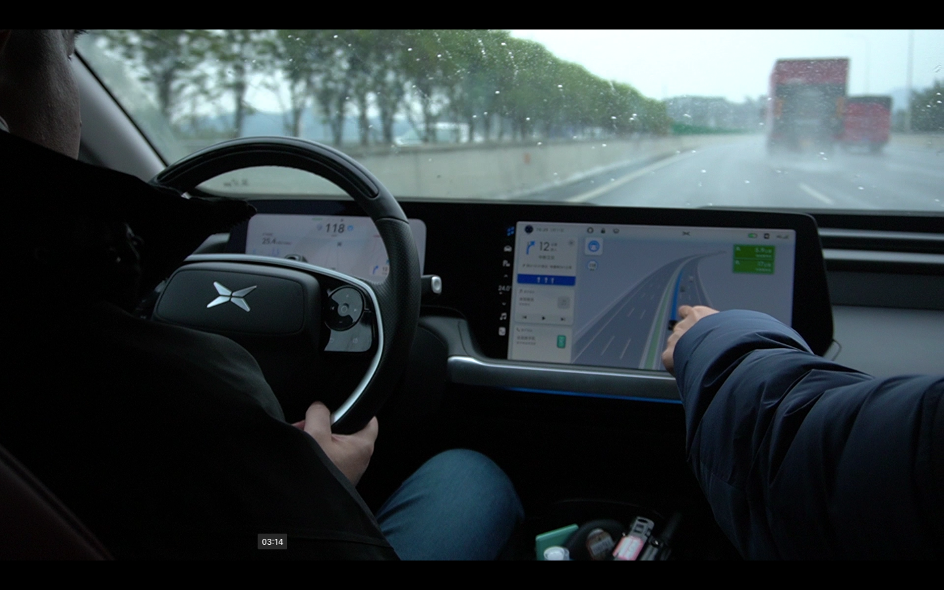
One detail is that the forward truck on the center console display is marked in a dark color, showing the team’s attention to details.
- Stable performance in the tunnel. During the test ride, we selected a new route for NGP testing, which included a tunnel. However, NGP performed stably not just because of the high-precision map but also the support from the three-fold high-precision positioning hardware (GPS+RTK+IMU) and real-time positioning and map construction technology (SLAM), which complement each other and increase the stability of the system in the tunnel.
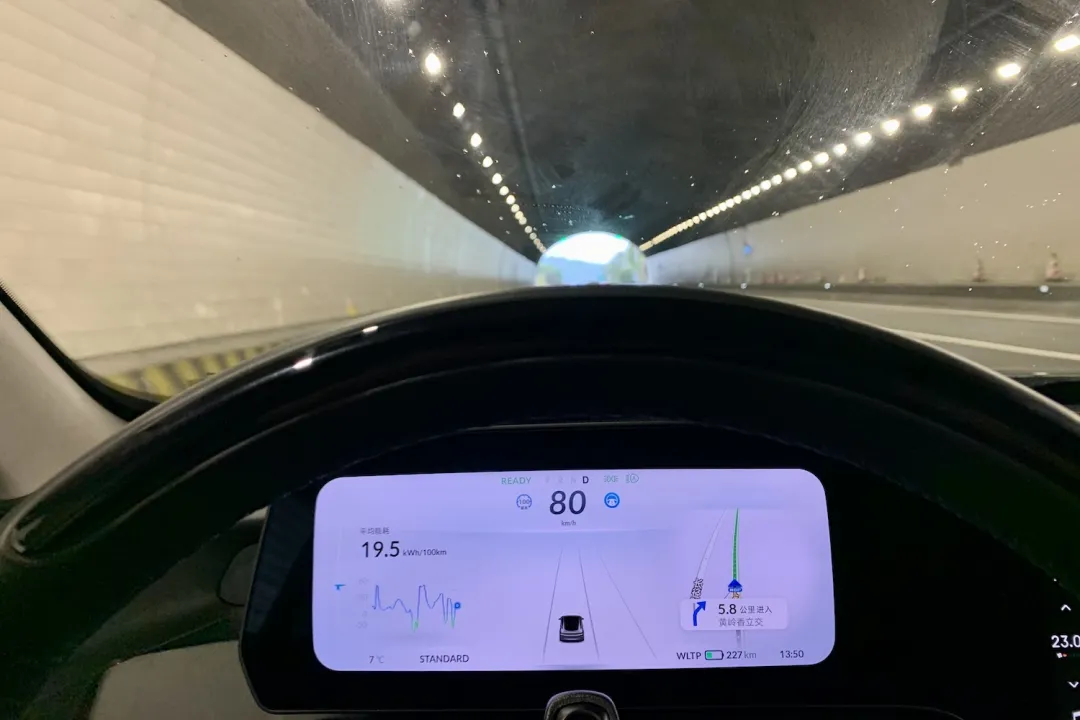
- The downgrade experience is smooth. This is also worth praising. Although there is high-precision map coverage on the expressway, there are still missing map segments in some areas. However, NGP transitions smoothly from NGP to LCC and back to NGP. Unless you deliberately stare at the screen, the transition is not apparent.
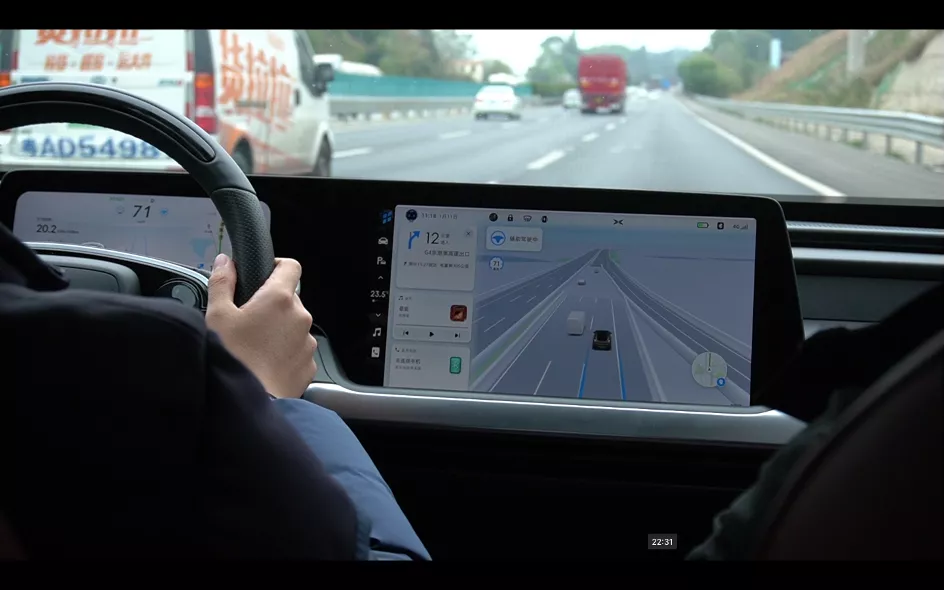
Of course, improvements are needed along with highlights.The logic of system shutdown needs to be optimized: in some cases, the system will suddenly shut down without any reminder, which requires the driver to have quick response capability, and also affects driving safety.
In the case of less traffic, the system has performed very well, but when the traffic increases, the system becomes a bit overwhelmed. For example, in the 12:26 video, NGP was preparing to exit the ramp (generally two kilometers in advance), but at this time, it happened that the traffic was heavy, and P7 could not change lanes successfully and eventually exited, and the driver took over. From this point of view, NGP still has considerable room for growth.
Of course, not only Xpeng’s NGP, Tesla’s NOA also has similar problems, which requires Tesla to put more efforts in “taming” local scenarios in China.

The proportion of high-precision map navigation screen is a bit too high: currently, displaying high-precision map navigation on the central control can increase users’ sense of safety in using NGP to a certain extent, but this takes up too much space. Users can only choose between traditional maps and high-precision map navigation, which is relatively unfriendly.

Another point is that Xpeng’s DMS (Driver Monitoring System) is not yet enabled, and will be officially launched in the second quarter of this year. By then, the whole experience and safety of NGP will be further improved.
Summary
Overall, the experience of this system is enough to amaze me. However, some peers who have tried NGP have questioned that the system is not aggressive enough, but I do not agree with this. I think that safety is more important than aggression. This is also a point worth praising for Xpeng.
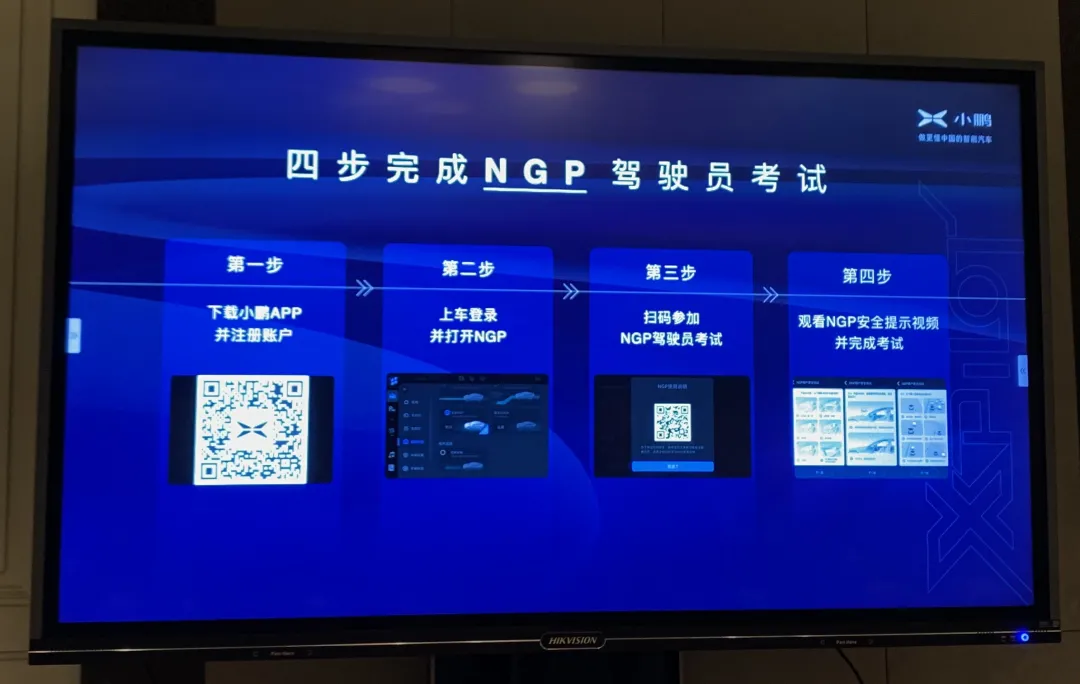
Xpeng said that in the future, users will need to pass a “test” when using NGP for the first time. This is actually a way of being responsible to users. When chatting with Xpeng Vice President Li Pengcheng, he also said that safety is very important. One problem now is that if the account owner passes the test, then even if his family members do not take the test, they can still use NGP, which will cause certain safety risks, so the in-vehicle driver monitoring system needs to be launched faster.According to Huang Xin’s statement, the beta version has only achieved half of the expected functions at the moment, so we can look forward to the future growth of NGP. In addition, Huang Xin said that development of parking memory and other functions will also be carried out this year.
In summary, XPeng Motors has a lot of work to do in terms of advanced driving assistance systems this year.
This article is a translation by ChatGPT of a Chinese report from 42HOW. If you have any questions about it, please email bd@42how.com.
